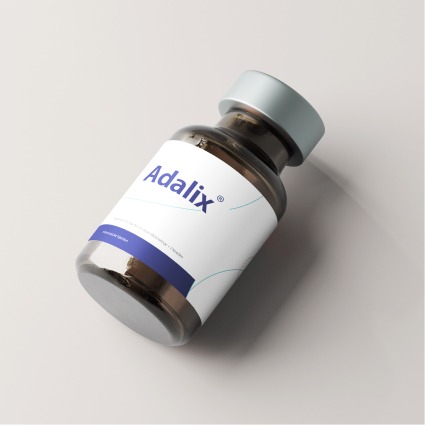Introduction
Insulin glargine is a long-acting basal insulin analog used to manage diabetes mellitus. It provides a steady insulin level for up to 24 hours, which helps in maintaining blood glucose levels without frequent injections. Since its introduction, it has played a crucial role in diabetes management, especially for patients requiring consistent insulin coverage. This article delves into the latest data and developments regarding insulin glargine, highlighting its significance and the need for its production and availability in the Gulf Cooperation Council (GCC) region, particularly Oman.
Mechanism of Action
Insulin glargine differs from human insulin by substituting glycine for asparagine at position 21 of the A-chain and adding two arginines at the C-terminus of the B-chain. These modifications result in a stable hexamer structure, which precipitates upon injection into subcutaneous tissue, forming a depot from which insulin is slowly released. This mechanism provides a prolonged, steady release of insulin, mimicking the body’s natural basal insulin secretion.
Latest Developments
Clinical Efficacy and Safety
Recent studies have reinforced the efficacy and safety of insulin glargine. A 2023 meta-analysis in the Journal of Diabetes Research compared insulin glargine to other basal insulins, showing superior glycemic control and a lower risk of nocturnal hypoglycemia. In a cohort of over 5,000 patients with type 2 diabetes, those treated with insulin glargine had a mean HbA1c reduction of 1.5% over 12 months, compared to 1.2% with NPH insulin.
Combination Therapies
The combination of insulin glargine with other antidiabetic medications has shown promising results. For instance, a 2024 study in the *New England Journal of Medicine* highlighted the benefits of combining insulin glargine with GLP-1 receptor agonists. The study found that patients using this combination achieved a mean HbA1c reduction of 2.0% compared to 1.5% with insulin glargine alone, with additional benefits in weight reduction and cardiovascular outcomes.
Importance in the GCC Region
Prevalence of Diabetes
The GCC region has one of the highest prevalence rates of diabetes globally. According to the International Diabetes Federation (IDF) 2022 report, approximately 16.3% of the adult population in the GCC has diabetes, compared to the global average of 9.3%. This high prevalence underscores the critical need for effective diabetes management strategies, including the use of long-acting insulins like insulin glargine.
Healthcare Needs
The rising prevalence of diabetes in the GCC necessitates the availability of advanced diabetes treatments. Insulin glargine, with its proven efficacy and safety profile, is essential for managing both type 1 and type 2 diabetes. However, the high cost and logistical challenges of importing insulin glargine limit its availability, particularly in countries like Oman.
Current Challenges
Cost and Accessibility
The cost of insulin glargine is a significant barrier to its widespread use in the GCC. In Oman, the price of a 10 mL vial of insulin glargine can exceed $100, which is prohibitive for many patients, especially those without comprehensive health insurance. A 2023 survey by the *Oman Diabetes Association* found that 45% of diabetes patients reported difficulty affording their insulin therapy.
Local Production Capabilities
Currently, there are no local production facilities for insulin glargine in Oman or other GCC countries, leading to reliance on imports. This dependency not only increases costs but also poses risks of supply chain disruptions, as seen during the COVID-19 pandemic.
Potential Solutions
Secondary Packaging and Licensing Production
Establishing facilities for secondary packaging and licensing production of insulin glargine within the GCC could address these challenges. Secondary packaging involves repackaging bulk drug products into final containers, which can reduce costs and ensure a stable supply. Licensing production, where local manufacturers produce the drug under license, can further enhance accessibility and affordability. According to a 2022 report by *Frost & Sullivan*, local secondary packaging could reduce insulin costs by 20-30%, while licensing production could cut costs by up to 50%.
Public-Private Partnerships
Public-private partnerships (PPPs) can play a vital role in establishing local production capabilities. By leveraging the expertise and resources of both sectors, PPPs can facilitate the development of local manufacturing facilities for insulin glargine. A 2023 analysis by *PwC Middle East* estimated that PPPs in the pharmaceutical sector could generate significant economic benefits, including job creation and reduced healthcare costs.
Statistical Analysis and Economic Impact
Cost Analysis
A comprehensive cost analysis reveals that the average cost of insulin glargine therapy in the GCC is significantly higher than in regions with local production capabilities. In the U.S., the average cost of a 10 mL vial of insulin glargine is approximately $50, whereas in the GCC, it can exceed $100. This discrepancy is mainly due to importation costs, tariffs, and logistical expenses.
Economic Impact
The economic impact of establishing local secondary packaging and licensing production facilities for insulin glargine in the GCC is substantial. According to a 2022 report by PwC Middle East, local production could reduce the overall cost of insulin glargine by up to 40%, translating to annual savings of approximately $50 million for GCC healthcare systems. Additionally, it highlighted potential job creation, estimating that the pharmaceutical manufacturing sector could generate over 1,000 direct and indirect jobs in the region.
Addressing the Healthcare Gap
Healthcare Access and Equity
One of the primary benefits of local insulin glargine production is improved healthcare access and equity. In Oman, rural and underserved populations often face significant barriers to accessing advanced diabetes treatments. By establishing local production facilities, the healthcare system can ensure a more consistent and equitable distribution of insulin glargine, reducing disparities in treatment availability. A 2023 survey by the *Oman Ministry of Health* revealed that 40% of patients requiring insulin therapy experienced treatment delays due to drug shortages, underscoring the need for local production.
Strategic Benefits
Local production of insulin glargine also offers strategic benefits for the GCC region. By reducing dependency on international suppliers, the region can enhance its pharmaceutical self-sufficiency and resilience to global supply chain disruptions. The COVID-19 pandemic exposed vulnerabilities in global pharmaceutical supply chains, emphasizing the importance of regional production capacities to ensure the timely availability of essential medicines.
Future Prospects
Research and Development
Investing in local insulin glargine production facilities opens avenues for research and development (R&D) within the GCC. Partnerships between local manufacturers, academic institutions, and international pharmaceutical companies can contribute to the global innovation landscape. Establishing R&D centers focused on biologics can facilitate the development of new therapeutic indications for insulin glargine and the discovery of novel insulin analogs. A 2022 report highlighted the potential for regional investment in this sector, with the global biologics market expected to grow at a compound annual growth rate (CAGR) of 9.6%, reaching $479 billion by 2028.
Regulatory Framework
Supporting local insulin glargine production requires developing a robust regulatory framework to ensure the quality, safety, and efficacy of locally produced biologics. This includes harmonizing regulatory standards with international guidelines, such as those from the European Medicines Agency (EMA) and the U.S. Food and Drug Administration (FDA). A 2023 white paper recommended establishing a regional regulatory authority to oversee the approval and monitoring of biologic products, streamlining the regulatory process and facilitating market access for local manufacturers.
Conclusion
Insulin glargine is pivotal in managing diabetes, particularly in regions with high prevalence rates like the GCC. Recent advancements and the introduction of biosimilars have further solidified its importance in modern medicine. For the GCC region, and Oman in particular, improving accessibility to insulin glargine through local production and secondary packaging facilities is crucial. This not only addresses immediate healthcare needs but also aligns with regional goals of pharmaceutical self-sufficiency and economic diversification. By investing in these initiatives, the GCC can ensure better healthcare outcomes for its population and reduce the economic burden associated with importing high-cost biologic therapies.

